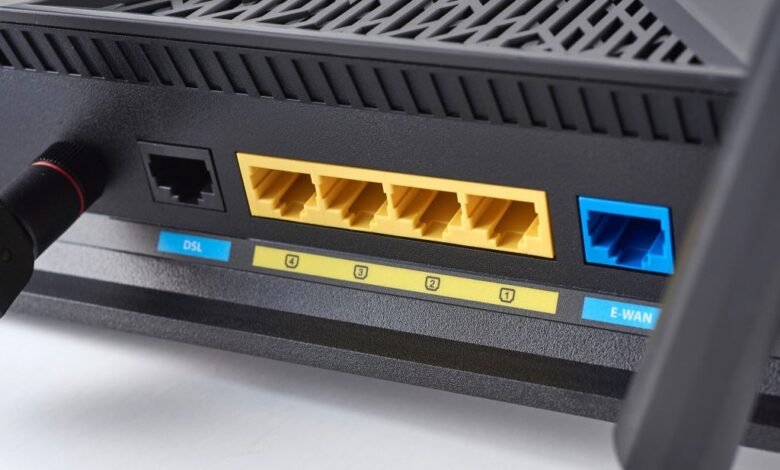Is Your Asus Router At Risk? Stealth Malware Attack Impacts Thousands Globally!

Thousands of Asus Routers Targeted by Stealthy Persistent Backdoors
The digital landscape is an ever-evolving battlefield, especially for consumers relying on technology for their daily lives. In recent developments, a concerning issue has emerged surrounding Asus routers, where thousands are reportedly being compromised by stealthy persistent backdoors. This situation poses significant risks not only to individual users but also to businesses and networks that depend on the security of their internet infrastructure.
The Anatomy of the Attack
Asus routers have fallen victim to a sophisticated assault that allows attackers to maintain access even after the affected device is seemingly fixed. The backdoor exploits vulnerabilities within the router’s firmware, granting attackers the ability to control the device remotely without the user’s knowledge. This method is particularly concerning because it can bypass traditional security protocols.
Hackers often utilize this strategy due to its effectiveness and the low likelihood of detection. By embedding a backdoor deep within the system, attackers can return at their leisure, extracting sensitive information, deploying malware, or using the compromised router as part of a larger botnet for more nefarious purposes.
Understanding the Nature of Backdoors
Backdoors are deliberate weaknesses inserted into software that allow unauthorized access to the system. They can be introduced through malicious updates, poorly protected APIs, or unsecured remote access features. These stealthy intrusions can evade standard security measures, making them particularly dangerous.
The persistent nature of these backdoors means that even if a router owner believes they have secured their device, the attacker can still regain access at any time. This persistence presents a unique challenge for both consumers and cybersecurity experts attempting to mitigate such threats.
How the Attack Affects Users
The implications of these stealthy backdoors are far-reaching. For individual users, the direct effects can range from performance degradation of their home network to the unwarranted exposure of private data. Sensitive information, such as passwords, banking details, and personal communications, can be harvested by the intruders.
For businesses, the stakes are even higher. A compromised router could serve as a gateway for attackers to infiltrate corporate networks, potentially leading to data breaches, loss of intellectual property, and significant financial repercussions. The embedded backdoor can also be used to launch distributed denial-of-service (DDoS) attacks, crippling an organization’s online presence.
Risk Factors and Key Vulnerabilities
Several factors contribute to the vulnerabilities present in Asus routers. One major issue is outdated firmware. Many users neglect to update their devices, which can leave known vulnerabilities unpatched. This oversight allows attackers to exploit these weaknesses and establish a foothold in the network.
The variety of models and firmware versions used by Asus also complicates matters. Different models may have unique vulnerabilities, which makes it challenging for security teams to develop a one-size-fits-all solution. Attackers can target specific router models that are known to have weak security measures or outdated software, furthering their reach.
Detection and Prevention
Detecting such stealthy backdoors can be complex. Traditional antivirus software may not identify these vulnerabilities because they often masquerade as legitimate processes or system files. Users are advised to take a proactive approach to their router security by regularly monitoring their network activity and inspecting connected devices.
Steps for Secure Router Management:
- Regular Firmware Updates: Always keep your router’s firmware up to date to ensure all known vulnerabilities are patched.
- Change Default Credentials: Replace default usernames and passwords with strong, unique credentials to hinder unauthorized access.
- Secure Wireless Settings: Use strong encryption methods like WPA3 for wireless security and regularly review security settings.
- Disable Unused Features: Turn off remote management and other features that are not in use to limit potential attack vectors.
- Monitor Network Activity: Use tools to regularly check for unusual activity and unknown devices on your network.
Government and Manufacturer Response
In light of the widespread nature of these attacks, both government agencies and manufacturers are being urged to take action. Asus, along with cybersecurity organizations, must work in tandem to identify vulnerabilities and push for swift updates to secure affected devices. Additionally, raising awareness among consumers about the importance of router security is paramount.
Government officials are also playing a role by emphasizing the necessity of robust cybersecurity policies, particularly as more devices connect to the Internet of Things (IoT). As home networks become increasingly complex, the call for stringent security measures grows louder.
Consumer Awareness and Education
Consumer awareness is a crucial line of defense in combating cybersecurity threats. Many users remain unaware of the intricacies of network security, taking for granted the functionalities of their devices. Increased education regarding best practices for securing home networks can help empower consumers to protect themselves and their data effectively.
Encouraging Best Practices:
- Stay Informed: Follow cybersecurity news and updates related to your devices.
- Implement Strong Security Protocols: Make use of strong, unique passwords and enable two-factor authentication where possible.
- Be Wary of Phishing Attempts: Understand common tactics used by attackers to gain access to sensitive information.
Conclusion: Staying One Step Ahead
The situation with Asus routers represents a significant challenge in modern cybersecurity. As threats become more sophisticated, consumers and organizations must be vigilant and proactive in protecting their networks from potential intrusions.
By understanding the nature of backdoors, the impact of compromised routers, and how to effectively secure devices, users can mitigate risks and maintain control over their online environments. Continuous education, regular security updates, and proactive monitoring are essential in facing the ever-evolving cyber threat landscape.





